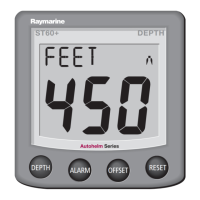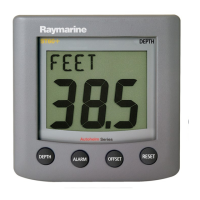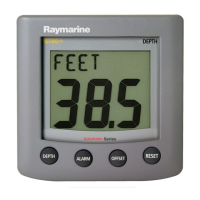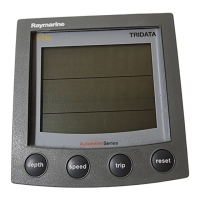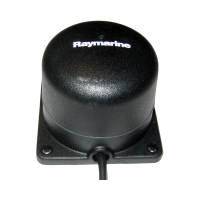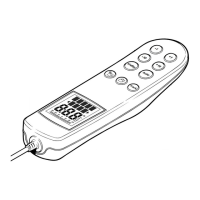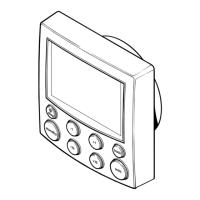Do you have a question about the Raymarine ST60 Compass Instrument and is the answer not in the manual?
Warnings on product installation, operation, and electrical safety.
Defines a fixed heading and calculates deviation from it.
Activated when connected to a SeaTalk compatible autopilot.
Warnings on high voltages and electromagnetic fields.
Procedures for diagnosing and resolving issues.
Table to identify faults, causes, and remedies.
Best positions for transducer and instrument.
Positioning the Fluxgate Compass transducer on the vessel.
Positioning requirements for the ST60 Compass instrument.
Broad requirements for installing instrument and transducer.
Step-by-step guide for surface mounting the instrument.
Instructions for fitting the instrument using a flush mount kit.
Detailed steps for flush mounting the instrument.
Installing the Fluxgate Compass transducer.
Connecting the ST60 Compass to SeaTalk or as a stand-alone unit.
Connecting power to SeaTalk systems and stand-alone instruments.
Power requirements and protection for SeaTalk systems.
Importance of calibration for optimizing instrument performance.
Procedures for linearization, heading alignment, and setting variation.
Compensating the transducer for deviation in calm conditions.
Aligning the vessel with a known bearing for calibration.
Parameters for advanced setup and factory resets.
Warnings on product installation, operation, and electrical safety.
Defines a fixed heading and calculates deviation from it.
Activated when connected to a SeaTalk compatible autopilot.
Warnings on high voltages and electromagnetic fields.
Procedures for diagnosing and resolving issues.
Table to identify faults, causes, and remedies.
Best positions for transducer and instrument.
Positioning the Fluxgate Compass transducer on the vessel.
Positioning requirements for the ST60 Compass instrument.
Broad requirements for installing instrument and transducer.
Step-by-step guide for surface mounting the instrument.
Instructions for fitting the instrument using a flush mount kit.
Detailed steps for flush mounting the instrument.
Installing the Fluxgate Compass transducer.
Connecting the ST60 Compass to SeaTalk or as a stand-alone unit.
Connecting power to SeaTalk systems and stand-alone instruments.
Power requirements and protection for SeaTalk systems.
Importance of calibration for optimizing instrument performance.
Procedures for linearization, heading alignment, and setting variation.
Compensating the transducer for deviation in calm conditions.
Aligning the vessel with a known bearing for calibration.
Parameters for advanced setup and factory resets.
| Brand | Raymarine |
|---|---|
| Model | ST60 Compass Instrument |
| Category | Marine Equipment |
| Language | English |
